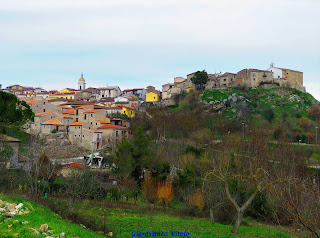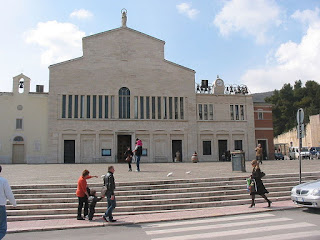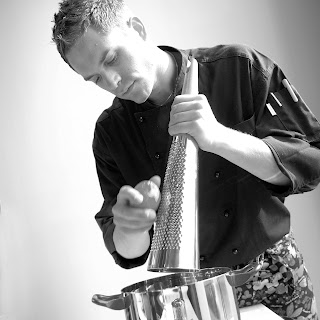Capuchin friar is claimed to have cured cancer
 |
| Padre Pio has become one of the most popular saints in history |
He was well-known for exhibiting stigmata, marks corresponding to the crucifixion wounds of Jesus, constantly making him the subject of controversy.
Padre Pio has said that at five years old he decided to dedicate his life to God and as a youth he reported experiencing heavenly visions and ecstasies. At the age of 15 he was admitted to the novitiate of the Capuchin Order, taking the name of Fra Pio, in honour of Pope Pius I.
He suffered from poor health for most of his life and fellow friars say he often appeared to be in a stupor during prayers. One claimed to have seen him in ecstasy, levitating above the ground.
In 1910 he was ordained a priest and moved to a friary in San Giovanni Rotondo in Foggia.
He was called up to serve in the Italian army during the First World War and assigned to the medical corps in Naples, but because of his poor health he was declared unfit for service and discharged.
In 1918 he exhibited stigmata for the first time while hearing a confession. This was to continue until his death 50 years later.
 |
| A photograph of the young Padre Pio and his stigmata |
The historian Sergio Luzzato claimed in one of his books that there is a document in the Vatican archives recording that Padre Pio once requested carbolic acid from a pharmacist. The Church later dismissed this allegation, claiming Padre Pio used the acid as a sterilising agent before administering injections to combat Spanish Flu.
To try to reduce the publicity surrounding Padre Pio, the Vatican introduced sanctions forbidding him from saying mass in public and displaying his stigmata. But after a while they cancelled these, allowing pilgrims from all over the world to visit him and many later claimed they had been healed by him.
The young Karol Wojtyla visited Padre Pio while studying in Italy. An Austrian cardinal has said Father Wojtyla confided in him that Padre Pio had told him he would one day ascend to the highest post in the church.
During the visit, the future Pope John Paul II had asked Padre Pio to pray for one of his friends in Poland who was suffering from cancer. It was later discovered the friend’s cancer was in spontaneous remission and doctors could find no explanation for this.
 |
| Padre Pio's cell at the San Giovanni Rotondo friary |
Padre Pio was beatified in 1999 and canonised in 2002 by Pope John Paul II.
There are now more than three thousand Padre Pio prayer groups with an estimated three million members, and parishes all over the world have been dedicated to him.
Among his devotees is the newly-installed Prime Minister of Italy, Giuseppe Conte, who was born near Foggia and attended a classical lyceum in San Giovanni Rotondo.
 |
| The village of Pietrelcina in Campania, Padre Pio's birthplace |
Padre Pio is now known as Saint Pio of Pietrelcina in recognition of his birthplace, a small farming village in the province of Benevento in the Campania region of Italy. His feast day is celebrated on September 23, the date of his death. He is the patron saint of Pietrelcina, and also of Italy, Malta, civil defence volunteers, adolescents, stress relief and the January blues.
 |
| The church of Santa Maria delle Grazie in San Giovanni Rotondo |
Padre Pio’s major shrine is the Sanctuary of Saint Pio of Pietrelcina in San Giovanni Rotondo in the province of Foggia. His body was initially buried in a crypt in the Church of our Lady of Grace (Santa Maria delle Grazie) in the town. In 2004 the Sanctuary of Saint Pio was dedicated by Pope John Paul II and in 2008 the saint’s body was exhumed from the crypt and prepared for display. It was confirmed at the time that the stigmata were not visible. In 2010 the Saint’s remains were moved to a golden crypt within the Sanctuary of Saint Pio.
Also on this day:
1922: The birth of former Communist leader Enrico Berlinguer
1971: The birth of Olympic marathon champion Stefano Baldini
Home










